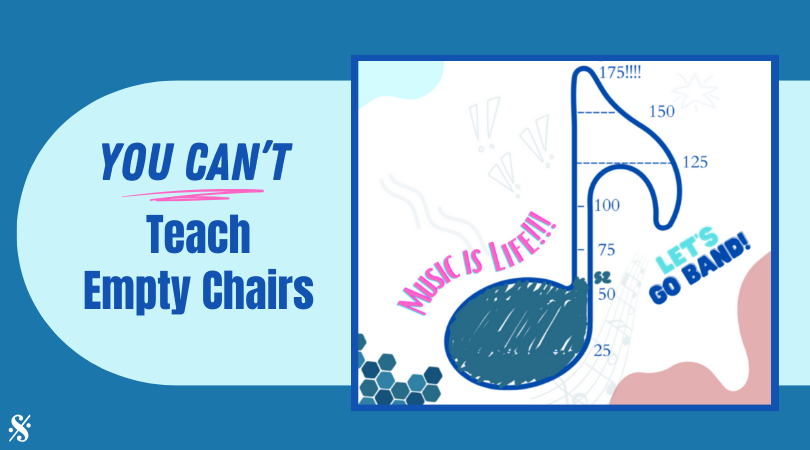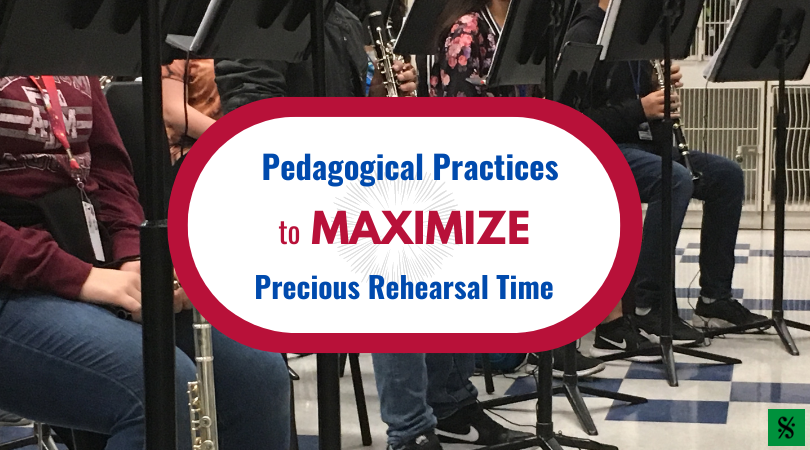Teaching young musicians to develop their sense of intonation can be a daunting task. Young brass players, especially, need to learn where the “sweet spot” is for each note on the length of tubing they put up to their face. The work pays off in the positive impact on individual and section sounds, and ultimately the band. Students perform with their best sound when they play in tune. Section blend and chord tuning become significantly easier when ears are actively listening and adjusting to what is around them. What students need to do is make this component of their musicianship second nature. To help them do that, they need to learn to love the process.

The expression “love the process” is a common one. It describes someone who likes to work hard and recognizes the importance of this work to create a high quality product. Students, particularly younger ones, frequently need external encouragement as motivation to see this importance. Creating games, using apps and recordings, and developing a sense of personal challenge can all help students get on this path. There are several great resources available for trumpet players that can easily be used with all brass students. Some of these are better suited for individual practice, others for section work, but they can all challenge a student to love the process of developing proper intonation on their instrument.
Individual tuning practice
When bands tune, it is to find a common pitch. Students sometimes come to believe that by getting their concert b-flat in tune, they are “in tune.” There are many more notes and eleven other keys to deal with (assuming B-flat major is the key when tuning the first time). A great way to get students engaged in the process of active intonation is to take the Vincent Cichowicz long tone studies and set them to a drone. There are several tuners, apps, and other online resources that can produce drones. Of crucial importance is that the drones are set to just intonation, not equal temperament.
Process
- Sound the root and dominant tones. This can be done through a speaker system or headphones.
- Have the student play the first Cichowicz long tone study on the mouthpiece to ensure consistent sound. It is also more natural, as in closer to singing, to create the pitches this way, rather than first using the trumpet or other brass instruments.
- Replicate what was just played on the mouthpiece now on the instrument. The student needs to listen carefully for interference in the sound waves.
- Move through all seven keys in the exercise and continue through the various extensions.
One of the major problems brass players have with an exercise like this is playing too wide of intervals. Because of this, brass players usually miss notes on the high side. By having them first play the exercise on the mouthpiece, they can learn how small the intervals really are and how little physical adjustment is truly needed. Immediate replication on the instrument will reinforce this concept of compressing intervals. By mastering where the intervals need to be, rather than learning specifically where notes are, brass players will have a greater command of their instruments. As players of instruments in just intonation, the mastery of all intervals in all keys is of paramount importance to high quality tone production.
Group tuning practice
One of the staples of group tuning exercises is the use of chorales. An excellent use of these is to have all players perform the melody line in unison. This shows where the individual players are on their instruments and helps a section or ensemble get “in the ballpark.” The chorale should then be repeated, in parts, to work on the ensemble tuning – intervals and chords. Balquhidder Music has published a book 25 Chorales for Four Trumpets that are a great starting point. Individual brass sections should avail themselves of this before sectional work.
For tuning practice with just two or three players, doing an exercise involving a long tone by one and moving notes by the other to create different resultant tones can be a fun challenge.
Process
- In a given key, one player sustains the dominant tone.
- The other player slowly alternates between the upper tonic and 9th scale degrees, moving only when a stable resultant tone is produced. When in tune, the first note pair will produce a tonic tone two octaves lower. The second pair will produce a dominant tone one octave lower than the sounding long tone.
- Continue on using the 9th and 10th scale degrees.
For brass players, this is an excellent way to work on the flat 5th partial. In the key of C-major, for example, a trumpeter can sustain the 3rd partial G as the dominant, while the other alternates between the 4th partial C and 5th partial D. In the third step, both the D and E would be on the 5th partial, but need to be alternately raised in the case of the D and lowered in the case of the E. The eBook version of Bai Lin’s Lip Flexibilities for all Brass Instruments has group exercises that can also be used for this type of tuning practice.
There are more ways to engage students in improving their mastery of their instrument’s intonation. Imagination and a little healthy competition can develop a devotion to the process. Eventually, they begin to correct themselves and help their younger peers develop. What is important is to make them understand that tuning the concert b-flat is just a note check, and true tuning is an ongoing, active process. By challenging themselves to go further in developing their ears, they will mature into performers with excellent section and personal sounds.
Kyle Millsap is Assistant Professor of Trumpet and Jazz and Texas A&M University-Kingsville. He oversees all aspects of the trumpet program, including applied instruction and directing the trumpet ensembles and jazz trumpet ensembles, as well as directing Jazz Band 3 and performing with the Kingsville Brass Quintet. He has performed and/or presented clinics at several state, national, and international conferences. For more information about Dr. Millsap or the trumpet program at TAMUK, visit millsaptrumpets.com or tamuktrumpets.com.
Related Reading:
Utilizing Sound Concepts When Teaching Brass
Dive Bombs: Better Low Brass Pitch Through Better Sound
Youtube Finds – Brass
If you would like to receive our weekly newsletter, sign up here.
Don’t forget to like us on Facebook too!
Learn. Share. Inspire.
BandDirectorsTalkShop.com






Leave a Reply
You must be logged in to post a comment.